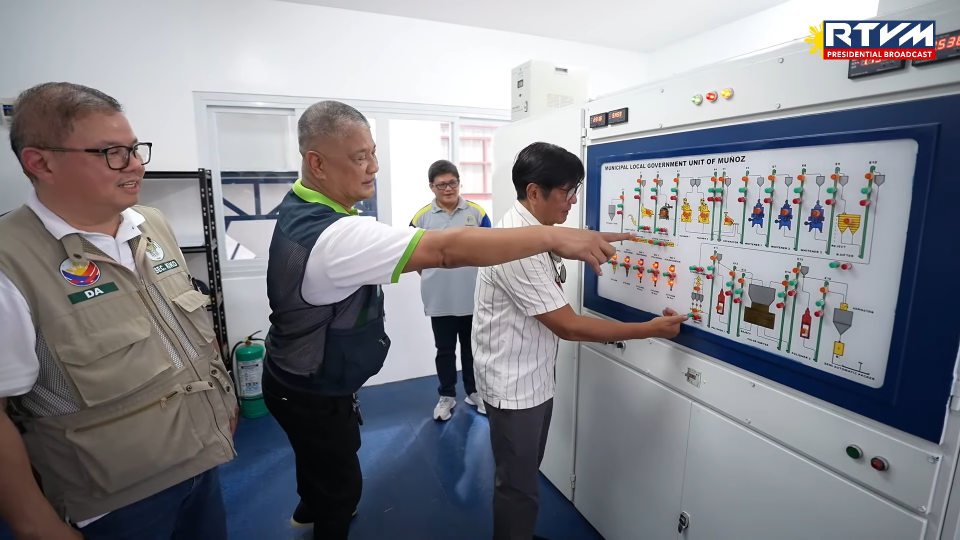
By Dean Aubrey Caratiquet
Farmers are widely regarded as the lifeblood of the society, toiling away in the paddy fields to plant and sow the produce that they bring to tables of every Filipino across the country.
Their immeasurable sacrifices in order to sustain the nation’s demand for various food products is what drives the government to double down on the agricultural sector, by recognizing their contributions to growth and development, as well as building up agricultural infrastructure and launching various projects that will look after their welfare.
President Ferdinand R. Marcos Jr. laid his plans to establish permanent soil laboratory units in every region, on top of the 16 Mobile Soil Laboratory units that will be distributed across the archipelago, which he cites as crucial in maximizing yields from arable lands in the country.
“Pero pagkatapos nitong mobile laboratory, maggagawa tayo ng permanent. Gusto naming maglagay ng permanent soil laboratory sa bawat region. Kaya ito, Phase 1 pa lang ito, ika nga,” the President concluded in his brief spiel, prior to engaging with with the national grand winners of the “50th Gawad Saka: Parangal sa mga Natatanging Magsasaka at Mangingisda” at the Science City of Muñoz, Nueva Ecija this Monday, June 30.
Together with the Department of Agriculture (D.A.) Secretary Francisco Tiu-Laurel Jr., the Chief Executive participated in a fruitful dialogue with select 50th Gawad Saka awardees, responding to their queries in a Question & Answer format.
At the dialogue, President Marcos cited incorporating modern technology in domestic agriculture as the key to pique the interest of Filipino youth in considering farming among the various career choices that are available to them, which would help in lowering the average age of farmers in the country.
“Yan, palagay ko ay magiging interesting na ‘yan para sa ating mga kabataan. May magandang hanapbuhay naman ang magsasaka. Masipag naman ang Pilipino. Kahit naman ‘yong mga bata, masipag naman talaga…Kahit na may sakripisyo, worth it ito,” the President declared.
Moreover, the Chief Executive also announced the various reforms that he made in the agricultural scene, such as the upcoming restoration of key powers to the National Food Authority (NFA), the D.A. ‘s intervention in the procurement of fertilizers for farmers, and his commitment to not lower the buying price of palay at the expense of farmers’ welfare.
President Marcos has also reaffirmed the expanded insurance coverage, which would cover the yields of farmers from calamities such as typhoons and the El Niño weather phenomenon.
“Pinawalak natin ang coverage ng ating insurance. Kapag tinamaan ng bagyo at nasira ang tanim, depende kung nasaan [bahagi] tayo [ng planting] season…kung puwede pang magtanim ulit, papasok naman ang D.A. at tutulungan kayong makapagtanim ulit. Kung huli na, bibigyan namin kayo ng suporta,” the President announced.
He cited such interventions among the lessons learned from the prolonged dry spells brought about by El Niño in 2024, as well as the spate of storms that dealt a significant blow to farmers’ crop yields last year, noting that this year, the country is now better equipped for such circumstances.
“Kung maulit ang El Niño at maulit iyong sunod-sunod na bagyo na kung maalala ninyo, anim na bagyo iyon na wala pang isang buwan, anim na bagyo ang tumama rito sa Pilipinas – ay handa na [tayo ngayon] dahil alam na natin kung ano iyong mga kailangang gawin,” President Marcos declared.

New agricultural facilities, equipment for Nueva Ecija farmers
Meanwhile, in a separate event at the same locale, the Chief Executive also led the inauguration of the Rice Processing System (RPS) II Facility and the turnover of farm machinery through the administration’s Rice Competitiveness Enhancement Fund (RCEF) Mechanization Program.
President Marcos was led on a tour around the state-of-the-art RPS II facility, which consists of a multi-stage rice mill which can process 2-3 tons of the staple grain per hour and two units of stainless steel mechanical dryers, each capable of handling 12 tons per batch.
The facility aims to boost farmers’ income, reduce their post-harvest losses, improve the quality and efficiency of rice processing and ensure access to modern drying and milling facilities, thus contributing to improved food security across the country.
Located in one of the country’s top rice-producing provinces, the RPS II Facility is expected to benefit approximately 6,000 farmers, who collectively manage a total area of 9,200 hectares across the Science City of Muñoz.
The event was capped off by the distribution of additional farm machinery to 17 farmers’ cooperatives and associations, which include 16 rice combine harvesters (RCHs), one four-wheel tractor with complete implements, and one handy cultivator.
avds
